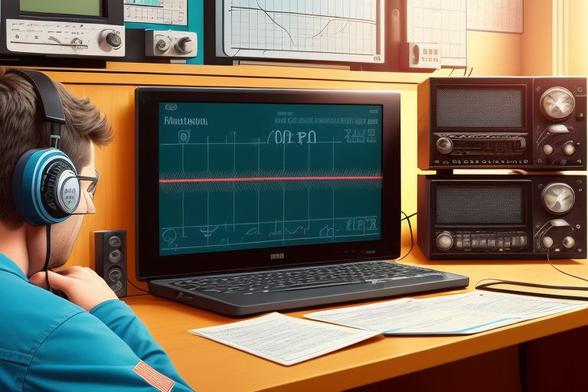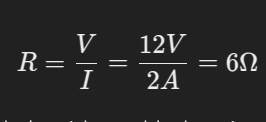Basic Electronics for the Amateur Radio Operator: What You Need to Know for Your Technician License
1,003 words, 5 minutes read time.
If you’re preparing for the Amateur Radio Technician License Exam, understanding basic electronics is a must. While you don’t need to be an electrical engineer, the exam includes fundamental concepts like Ohm’s Law, circuits, components, and RF safety. This guide will walk you through the essential topics, ensuring you’re ready for the test and your first steps as a ham radio operator.
Understanding Electricity: The Basics for Amateur Radio
Electricity is the movement of electrons through a conductor, like a wire. Three key electrical properties define how electricity behaves:
- Voltage (V) is the force that pushes electrons through a circuit. It’s measured in volts (V).
- Current (I) is the flow of electrons, measured in amperes (A).
- Resistance (R) opposes the flow of electricity and is measured in ohms (Ω).
These three are tied together by Ohm’s Law, a fundamental equation in electronics:
V=I×R
This means if you know any two values, you can calculate the third. Understanding this equation is critical for both the exam and real-world troubleshooting.
Direct Current (DC) vs. Alternating Current (AC)
Electricity comes in two forms:
- Direct Current (DC) flows in one direction. Batteries and solar panels produce DC.
- Alternating Current (AC) changes direction many times per second. Household electricity is AC because it’s more efficient for transmission over long distances.
For amateur radio, most equipment runs on DC power, but you’ll also need to understand AC because radio signals are alternating currents that oscillate at high frequencies.
Essential Electronic Components and Their Functions
Several key electronic components appear on the Technician Exam. Here’s what they do:
- Resistors limit current flow.
- Capacitors store and release energy, often used in filtering circuits.
- Inductors store energy in magnetic fields and are important in tuning circuits.
- Diodes allow current to flow in only one direction, useful in rectifier circuits that convert AC to DC.
- Transistors act as switches and amplifiers in radio circuits.
Understanding these basics helps you answer questions about circuit behavior and troubleshooting.
Series and Parallel Circuits
Circuits are made up of components arranged in either series or parallel:
- In a series circuit, current flows through all components one after another. The same current passes through each, but the voltage is divided.
- In a parallel circuit, components share the same voltage, but the current divides among them.
For the exam, you should know how voltage, current, and resistance behave in each type of circuit. For example, total resistance in a series circuit is the sum of all resistances, while in parallel circuits, total resistance is lower than the smallest individual resistor.
Basic AC Concepts and Frequency
Radio waves are AC signals that oscillate at different frequencies. Frequency (f) is measured in hertz (Hz) and tells us how many times per second the wave changes direction. One kilohertz (kHz) is 1,000 Hz, and one megahertz (MHz) is 1,000,000 Hz.
Ham radios operate in different frequency bands, such as:
- VHF (Very High Frequency): 30 MHz – 300 MHz (e.g., 2-meter band)
- UHF (Ultra High Frequency): 300 MHz – 3 GHz (e.g., 70-centimeter band)
Higher frequencies allow for shorter antennas and are good for local communication, while lower frequencies travel further.
Modulation: How We Send Information Over Radio Waves
Modulation is how a radio wave (carrier wave) carries information. The Technician Exam covers three main types:
- Amplitude Modulation (AM): The signal strength (amplitude) changes with the voice signal.
- Frequency Modulation (FM): The frequency of the wave changes to encode information. FM is more resistant to noise and is commonly used in VHF and UHF bands.
- Single Sideband (SSB): A variation of AM that uses less bandwidth and is more efficient for long-distance communication.
Knowing these helps when selecting modes for different types of contacts.
Power, Batteries, and Safety
Most ham radios run on 12V DC power sources, such as batteries or regulated power supplies. It’s important to understand:
- Battery safety: Overcharging or short-circuiting batteries (especially lithium-ion) can be dangerous.
- Fuse protection: Many radios have built-in fuses to prevent excessive current draw.
Another key topic on the test is RF exposure safety. High-power transmissions can generate strong radio frequency (RF) radiation, which may cause health risks. To minimize exposure:
- Maintain a safe distance from transmitting antennas.
- Use the lowest power necessary for effective communication.
- Follow FCC RF exposure limits for your frequency and power level.
Ohm’s Law in Real-World Ham Radio Applications
A common exam question might involve calculating current or voltage using Ohm’s Law. For example:
Question: If a radio operates at 12V and draws 2A of current, what is the resistance?
Using Ohm’s Law:
Understanding these calculations can help with troubleshooting and designing circuits.
Final Thoughts: Studying for the Exam and Beyond
The Technician License Exam covers these topics, but learning electronics doesn’t stop there. Once licensed, you’ll continue exploring concepts like antenna design, signal propagation, and digital communication.
Great resources for studying include:
- ARRL’s Technician Class License Manual: The official guide with explanations and practice questions.
- HamStudy.org: Free practice tests and flashcards.
- QRZ.com Practice Exams: Simulated tests with real exam questions.
By mastering these basic electronics concepts, you’ll be well on your way to passing the exam and starting your journey in amateur radio. Keep practicing, get hands-on experience, and soon, you’ll be making contacts on the air!
D. Bryan King
Sources
Disclaimer:
The views and opinions expressed in this post are solely those of the author. The information provided is based on personal research, experience, and understanding of the subject matter at the time of writing. Readers should consult relevant experts or authorities for specific guidance related to their unique situations.
Related Posts
Rate this:
#ACVsDC #am #AmateurRadio #amateurRadioEducation #amateurRadioTraining #antennaTheory #ARRLStudyGuide #basicElectronics #beginnerHamRadio #capacitors #circuits #current #diodes #electricalComponents #electronicsBasics #examPrep #FCCExam #FM #hamExam #hamLicense #hamOperator #hamRadio #hamRadioBands #hamRadioBeginner #hamRadioComponents #hamRadioEquipment #hamRadioOperator #hamRadioStudy #HamRadioStudyGuide #HamRadioTraining #hamStudyGuide #inductors #modulation #OhmSLaw #powerSupply #radioBroadcasting #radioCommunication #radioFrequencies #radioFrequency #radioFundamentals #RadioLicensing #radioSignals #RadioTechnology #radioTransmission #radioWaves #resistance #resistors #RFExposure #RFSafety #SSB #technicianClass #TechnicianLicense #transistors #UHF #VHF #voltage


